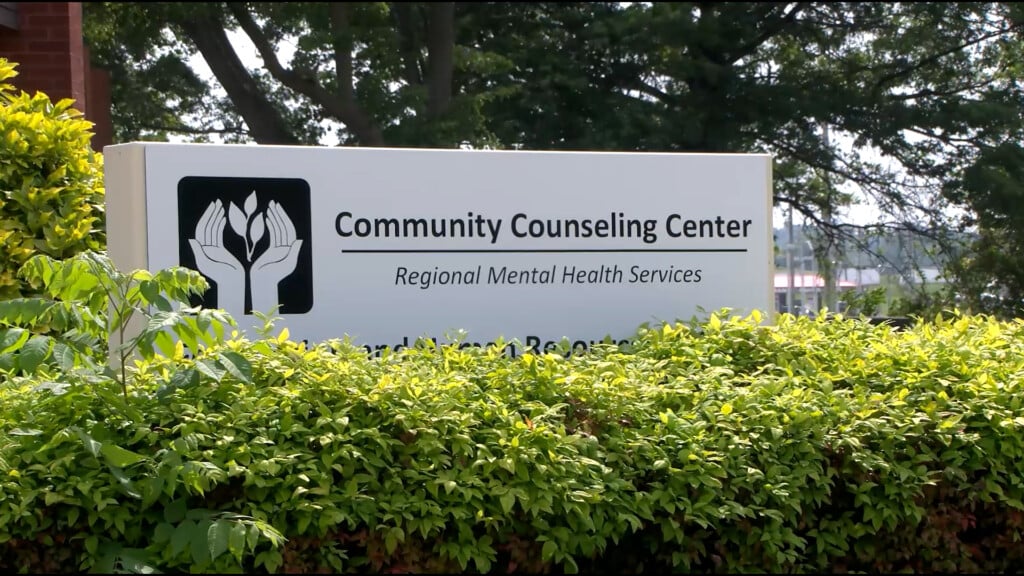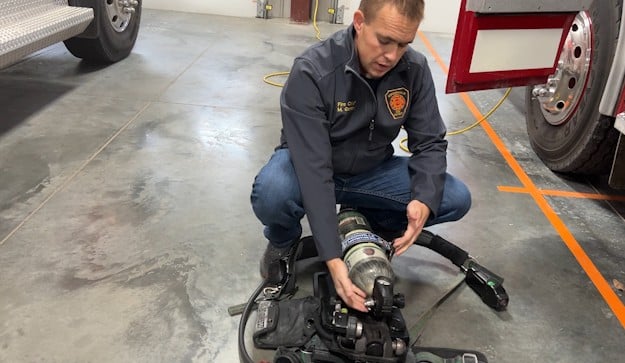Five ways to help prevent suicide for Mental Health Awareness Month

CAPE GIRARDEAU, Mo., (KBSI)- According to the Community Counseling Center along with Behavioral Health Crisis Center, a partnership of CCC and Gibson Recovery here are five things you can do to help prevent suicide:
1. Acknowledge negative feelings and provide support. If your teen is going through a rough time, provide support. Listen to their concerns and let your teen know you are there to help. Also, look for ways to provide spiritual, emotional and personal support and offer problem-solving and coping techniques that could improve the situation.
2. Be honest. Talk to your teen. Ask how they are doing and about some of the emotions they may be experiencing. Review past experiences that were challenging and talk about how your teen overcame them. Validate their concerns while gently reminding them about the temporary nature of problems and that moving forward through adversity is possible by using resilience tools developed in the past.
3. Promote social connectivity. Identify ways to connect more as a family and provide opportunities to connect with peers and other adult caregivers. These social connections can help override a teen’s feelings of loneliness and helplessness and allow them to transition to a sense of belonging and importance.
4. Ask questions and have conversations. Noticing changes in your teen can be unsettling. Be proactive and ask what’s wrong. If you’re worried your teen may have suicidal thoughts, be direct and ask, “Are you thinking about hurting yourself?” Asking about suicidal thoughts doesn’t cause harm and often helps. If your teen answers yes, don’t downplay the situation. Ask how you can help, express your concerns about his or her feelings and seek professional help.
5. Seek professional help. There are many treatment options for people contemplating taking their own life. More than 90% of people who commit suicide have one or more treatable mental illnesses. Even if the root cause isn’t a mental illness, coping techniques and emotional support are proven methods to aid those in need.
What Are The Warning Signs Of Youth Suicide?
Many of the warning signs of suicide are also symptoms of depression. They are:
- Changes in eating and sleeping habits
- Loss of interest in normal activities
- Withdrawal from friends and family members
- Acting-out behaviors and running away
- Alcohol or drug use
- Neglecting their personal appearance
- Unnecessary risk-taking
- Obsession with death and dying
- More physical complaints often linked to emotional distress, such as stomachaches, headaches, and extreme tiredness (fatigue)
- Loss of interest in school or schoolwork
- Feeling bored
- Problems focusing
- Feeling they want to die
- Lack of response to praise
For some preteens and teens, normal developmental changes can be very unsettling when combined with other events, such as:
- Changes in their families, such as divorce, siblings moving out, or moving to a new town
- Changes in friendships
- Stress from social media activities, including being a victim of cyberbullying
- Problems in school
- Other losses
These problems may seem too hard or embarrassing to overcome. For some, suicide may seem like a solution.
Challenges this generation faces that may contribute:
Loneliness: Young people ages 15–24 are spending less than half as much time in person with friends as they were two decades ago.
The COVID-19 pandemic: Global rates of childhood depression and anxiety symptoms doubled during the pandemic.
Access to firearms: Researchers estimate that 4.6 million children live in households with at least one loaded, unlocked firearm.
Fears about the future: Nearly 60% of youth ages 16–25 say they are either very or extremely worried about the climate.
Constant digital connection: 46% of teens ages 13–17 say they use the internet “almost constantly.”
Groups that face additional challenges:
American Indian/Alaska Native (AI/AN) youth (ages 10–24) suicide rates are almost twice as high as the overall national average.
Youth in rural areas (ages 10–24) are nearly twice as likely to die by suicide as those in large metro areas.
Black youth (ages 10–24) are experiencing the fastest increasing suicide rates.
Youth involved with the criminal legal system (ages 10–24) die by suicide two to three times more often than the general youth population.
LGBTQIA+ youth (ages 13–24) are at increased risk of suicide: 41% seriously considered attempting suicide in the past year, and 14% attempted suicide.
7 Current Factors Affecting Youth Suicide
1. Adolescents and young adults are experiencing increasing isolation and loneliness.
In his 2023 report on the epidemic of loneliness in this country, the surgeon general pointed out that Americans are spending less time with friends and loved ones than in the past. This trend is especially pronounced among adolescents and young adults. Social connectedness is strongly linked to physical well-being throughout life. Loneliness affects both mental and physical health and increases risk of mortality. Consider the following findings:
While time spent online can be social, it does not directly replace loss of in-person time, and for young people ages 15–24, time spent in person with friends dropped by more than half over the last two decades — from more than 150 minutes per day in 2003 to less than 70 minutes per day in 2020.
The pandemic deepened loneliness, especially for youth. In a 2020 survey, 61% of young people ages 18–25 reported feeling serious loneliness.
A recent systematic review suggests that post-pandemic feelings of loneliness have persisted, with some studies finding that more than half of children and adolescents are experiencing at least moderate levels of loneliness.
2. The COVID-19 pandemic had a largely negative impact on youth mental health.
Global rates of childhood depression and anxiety symptoms doubled during the pandemic.
In the United States, mental health–related emergency room visits increased 22% for teen girls in the second year of the pandemic relative to the pre-pandemic levels of 2019.
People of color were more likely than white people to be adversely affected by COVID-19 and to screen positive for anxiety and depression during the pandemic.
3. Gun ownership and access to firearms is increasing.
Although there are multiple factors that elevate the risk of suicide, a person’s survival may ultimately come down to one thing: what methods are readily available and how lethal they are.
Gun sales have surged since 2020, and along with them the increased risk of suicide. Multiple studies, including a recent analysis of California residents, demonstrate that gun owners and their families are not at higher risk of thinking about or attempting suicide, but are at greater risk of death by suicide.
Nearly 90% of suicide attempts with a firearm are fatal. Suicidal crises often escalate quickly, and the instant a trigger is pulled, there is no longer an opportunity to interrupt the crisis or for a person to change their mind before being seriously injured or killed.
4. Teens are deeply worried about the world and their future.
More than two-thirds of young people report feeling very or somewhat stressed about our nation’s future.
Nearly 60% of youth ages 16–25 say they are either very or extremely worried about the climate.
Among teens ages 14–17, 36% report little or no purpose or meaning in life, and this absence is strongly correlated with depression and anxiety.
5. Teens and young adults live in a world of constant digital connection.
From phones to virtual reality (VR) headsets, rapidly accelerating technological innovation means most youth have a constant flow of information at their fingertips at all times. Nearly half of teens ages 13–17 say they use the internet “almost constantly.”
Although there are important benefits to new and evolving technology — such as opportunity for connection, creation, and collaboration — the high-speed stimulation, 24/7 availability, and features built in to command and keep attention pose significant challenges for young people, who are learning self-regulation. JED explored the complex risks and opportunities related to social media and other new technologies in the report Can the Metaverse Be Good for Youth Mental Health?
6. Financial insecurity drives mental health challenges in young people.
Nearly 3 in 5 college students face some type of essential needs insecurity, including housing insecurity, food insecurity, or lack of access to affordable health care.
More than half of borrowers link their mental health issues to their student loan debt.
Having debt is associated with an increased risk of depression, suicide attempts, and death by suicide.
7. Young people are not getting the mental health treatment they need.
Despite the fact that more than half of mood, anxiety, impulse control, and substance use disorders begin by age 14 — and many young people without diagnosable mental health conditions could benefit from counseling — mental health care remains difficult for teens and young adults to access.
Among youth ages 12–17 with major depression, 60.3% do not receive any form of treatment.
9 Essential Steps to Reducing Youth Suicide
1. Take a comprehensive approach
Adopting a comprehensive approach is essential to reducing suicide risk. JED’s Comprehensive Approach to Mental Health Promotion and Suicide Prevention in schools is built around seven strategic domains:
Developing life skills
Promoting social connectedness
Identifying students at risk
Increasing help-seeking behavior
Providing mental health and substance misuse services
Establishing and following crisis management procedures
Promoting means safety
2. Create community and connection
In the surgeon general’s 2023 advisory Our Epidemic of Loneliness and Isolation, youth are highlighted as a group that is especially disconnected and isolated. To address this, we must:
Design communities of care within our schools
Create opportunities and spaces for young people to meet and gather organically
Support intergenerational connections
3. Meet basic needs and address trauma
There are strong links between poverty, societal and racial inequity, trauma, and mental health struggles. To address these, we must:
Strengthen social safety nets that ensure access to housing, food, education, and health care
Expand availability of trauma-informed care
Employ community- and family-based, trauma-informed approaches for reducing youth involvement in the criminal legal system
4. Increase coping and emotional support skills
Self-awareness and interpersonal skills help young people better solve problems, manage emotional stressors, and control impulses, improving their ability to move through challenges as they arise. Additionally, community members — including youth — who are trained to identify signs of struggle, listen actively, respond supportively, and know when and how to connect a young person to professional help, if needed, can play a vital role in supporting youth mental health.
5. Meaningfully increase access to care
Too many young people reach out for professional help and run into barriers when trying to connect to it. To improve access to care for youth, we must support implementation and enforcement of the Mental Health Parity and Addiction Equity Act, require insurance coverage of mental health services delivered in schools, ensure that provider networks adequately serve diverse populations, and design crisis services to meet the needs of communities.
6. Make widespread use of proven suicide-prevention treatments and interventions
There are treatment approaches that meaningfully reduce suicidal thoughts and attempts but are underutilized. These approaches — including dialectical behavior therapy (DBT), Collaborative Assessment and Management of Suicidality (CAMS), cognitive behavioral therapy for suicide prevention (CBT-SP), attachment-based family therapy (ABFT), brief safety planning interventions, and pharmacological interventions — must be prioritized in mental health care settings to lower suicide rates.
7. Reduce access to lethal means — especially firearms
Putting time and distance between someone experiencing a crisis and access to lethal means is a critical intervention to lower suicide deaths. This applies especially to firearms, which are 90% fatal when used in a suicide attempt. Homes without firearms have lower suicide rates than homes with firearms, and among gun-owning homes, the risk of suicide, particularly for youth, is lower when guns are stored locked and unloaded. Everyone from families to gun owner groups to legislators should be involved in systemic and individual approaches to reduce the risk of firearm suicides.
8. Advocate for safe online spaces
Young people are increasingly engaged in online activities in a largely unregulated space. It is imperative that policymakers and other stakeholders take a pro-safety approach to apps and platforms where young people spend time, centering youth in any efforts to improve them.
9. Leverage technology to support youth mental health
Although mobile devices such as smartphones, tablets, and virtual reality (VR) headsets can pose risks for young people, they also offer more ways to connect with one another and access mental health care. Technology can be leveraged to improve mental health by expanding access to professional help through telemedicine, connecting to young people where they are in digital spaces, and making use of the virtual worlds of gaming, the metaverse, and extended reality to offer resources and support in real time.
https://www.nationwidechildrens.org/conditions/health-library/youth-suicide
https://healthcare.utah.edu/healthfeed/2022/09/how-talk-your-child-about-suicide-age-age-guide


